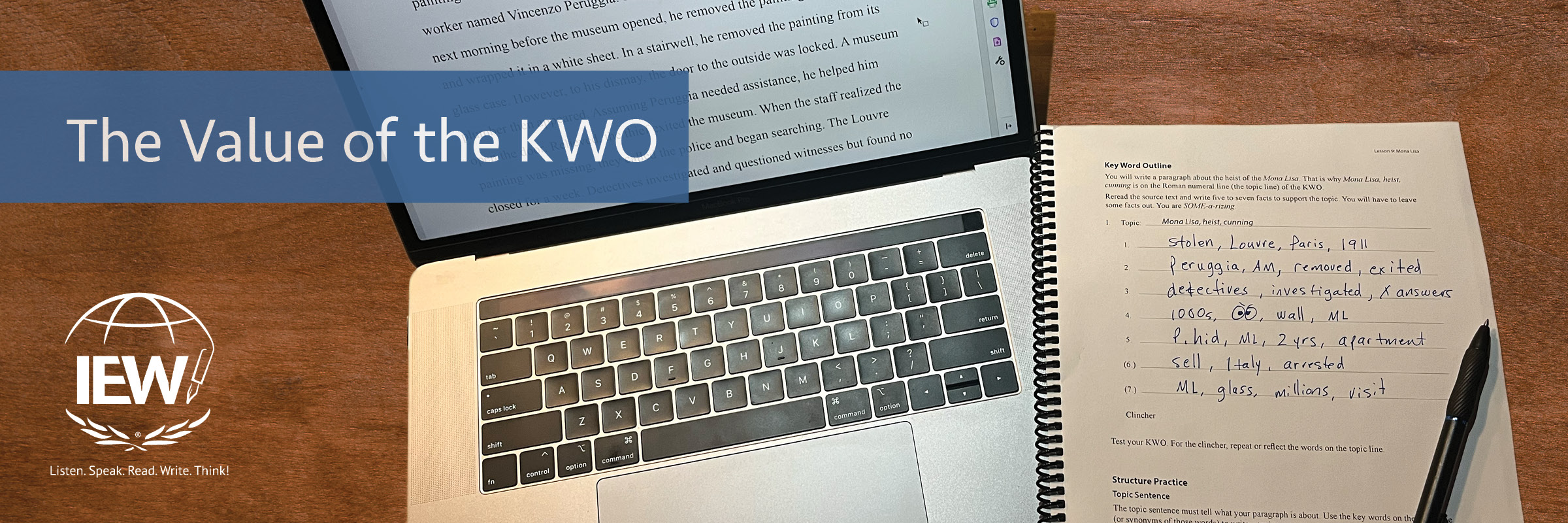
A few years ago, my brother was working on his master’s degree and asked me to review his papers before he submitted them. As I read, I noticed a troubling pattern: his papers started strong with substantial details and well-developed points. However, as he approached the required word count, the quality diminished. Near the end the points seemed hastily thrown together. I realized he was not planning before he wrote. I invited him to my house and taught him how to structure his papers using a key word outline. In time, he embraced this practice and even encouraged those assigned to do group projects with him to begin similarly.
An outline serves as a blueprint for writing—much like the plans used by builders to construct a house. Building without a blueprint can result in an unstable structure. In the same way, writing without an outline can result in a disorganized paper. With a plan you can arrange ideas, ensuring each part of the paper serves a purpose and contributes to a cohesive whole.
At IEW, students learn to write a key word outline, or KWO, before they write. Although they are introduced to the KWO in Unit 1, learning to write a KWO is a process that is developed as students progress through IEW’s structural units and is refined as students repeat the process year after year.
Unit 1: Note Making and Outlines
In Unit 1 students learn the basics of the KWO. Instead of meticulously crafting every sentence from the start, students learn to jot main ideas in a concise manner, focusing on essential details and facts. Teachers train students to focus on main ideas by providing rules. Each line contains 2-3 key words; symbols, numbers, and abbreviations are free. This limitation makes the note-taking process faster. It also ensures students use their own words as they write from the KWO, which is what they learn in Unit 2: Writing from Notes.
Unit 3: Retelling Narrative Stories
In Unit 3 students read a narrative and ask questions. Because each paragraph within a paper has a specific purpose, students practice organizing the KWO by sorting information into logical sections. The details about characters and setting must be placed in the first section, details related to the problem belong in the second section, and details for the climax, resolution, and message appear in the final section. Organizing facts by a paragraph’s purpose helps students discover how paragraphs work together to develop the theme of a paper.
Unit 4: Summarizing a Reference
In Unit 4 students learn every paper is about a subject and each paragraph is about a topic related to that subject. The KWO becomes more detailed: each Roman numeral line represents a specific topic that supports the paper’s subject, and the interesting and important facts beneath each Roman numeral must relate to the chosen topic by supporting, proving, or illustrating it. When a KWO begins with a topic and the facts relate to the topic, every sentence written from the KWO adds value to the composition. At this point, students are encouraged to pack their KWOs with 2-3 key words, symbols, numbers, and abbreviations. The fuller the KWO, the more information students have to use as they write their papers.
Unit 5: Writing from Pictures
In Unit 5 students discover the power of generating details for their KWOs by asking questions about pictures: Who? What? When? Where? Why? How? Before? After? Outside? These questions guide students to think critically about what information is necessary to include. By asking these questions, they learn to deepen their understanding of their topics and provide comprehensive answers in their writing.
Unit 6: Summarizing Multiple References
In Unit 6 the focus is on writing research papers. Students learn to gather facts from multiple references as they continue asking questions to develop a thorough understanding of their subjects. The answers are not found in the brain but discovered in published sources. After conducting basic research on a subject, students choose topics to write about. With a specific topic in mind, they write source outlines from a variety of references and then compile these into a fused outline, which serves as the working guide for a paragraph. This process results in a cohesive, fact-filled research paper.
Unit 7: Inventive Writing
In Unit 7 students face the blank page to write compositions often in response to a prompt. Again, they begin with the KWO. This time they do not reflect on a narrative they have read or facts they have researched. Instead, they take notes from the brain by asking questions. The answers to the questions become the words on the KWO. The process is clear: begin with a topic, write two or three key words on each line related to the topic, and use symbols, numbers, and abbreviations as possible. Answers can be short because details can be added as the paper is written.
Unit 8: Formal Essay Models and Unit 9: Formal Critique
In these latter units, students use acquired skills to write various types of essays, and each begins with a plan—a KWO. Students now consider the sequence in which facts should appear. This organization results in a polished paper because students learn to present their ideas in a logical way. For example, in a persuasive essay students present the issue, provide supporting evidence, address counterarguments, and conclude with a strong summary. As students write and test their KWOs, they discover when to reorder their facts or where to fill in gaps with additional information.
Reflecting on my brother’s experience, I realize how valuable the KWO is. Initially, his papers were scattered and lacked direction because he had no plan to guide him. However, after learning how to plan, he not only improved his own work but saved time in the process. Just as a blueprint is essential to building a house, a key word outline is crucial to constructing coherent compositions.
by Heidi Thomas
